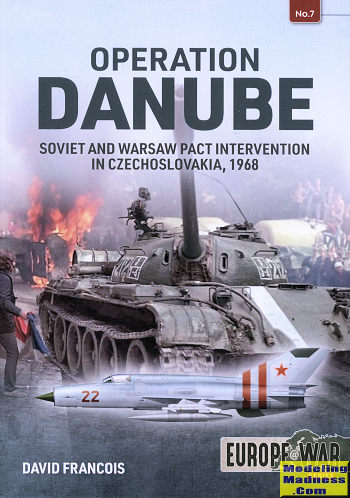 This book
covers an event that, for whatever reason, was really impressed into my mind
when it took place. I was in college at the time and unlike today, these events
unfolded on the evening television. What makes this somewhat amazing is that
this was in the middle of the Vietnam War and the unrest at home regarding
America's participation. The pre-occupation with Vietnam is also a reason that
the US did not get involved in the events taking place in central Europe.
This book
covers an event that, for whatever reason, was really impressed into my mind
when it took place. I was in college at the time and unlike today, these events
unfolded on the evening television. What makes this somewhat amazing is that
this was in the middle of the Vietnam War and the unrest at home regarding
America's participation. The pre-occupation with Vietnam is also a reason that
the US did not get involved in the events taking place in central Europe.
Czechoslovakia was a nation born out of the old
Austro-Hungarian empire after WWI. It was a nation where two major groups, the
Czechs and the Slovaks were joined together to form the nation. The Slovaks were
allowed a bit of autonomy from the Czechs and both groups worked together to
make what was a peaceful and progressive nation. Prior to the German invasion of
1938, Czechoslovakia was one of the most industrially advanced nations in the
area and even after WWII, they were quick to get back on their feet. However,
unlike their pre-war democratic government, within a few short years, a
communist government took hold and based itself on the Stalinist form of
communism with very close ties to the USSR.
Even then, Czechoslovakia was unlike other Warsaw Pact
nations in that there were no Soviet forces based in the country like there was
in Poland or East Germany. This made the Soviets somewhat nervous, though they
held back and trusted the Czechs to hold up their end of the defense bargain.
Then Alexander Dubcek came into power. He was still a communist, but quite
reform minded. He wanted to increase the freedoms to own private businesses,
increase freedom of speech and allow radio and newspapers to openly criticize
the government.
This brought about what the Soviets and other Eastern
Bloc nations called 'The Czechoslovakia Problem'. It was felt that the reforms
went too far and that the Czechs would make moves to bring themselves closer to
the West. Through the usual lies and suppositions from those afraid of losing
power (where have we heard all this?), the Soviet leadership was brought to fear
that they would lose part of their buffer against NATO.
The result was that the Soviets and other Warsaw Pact
nations invaded Czechoslovakia. Though the people of the nation hated the
invaders, the invasion was fairly peaceful with almost no loss of lives. Of
course, when one sends half a million troops into a nation along with tanks and
aircraft, there really is little that can be done. Eventually, Dubcek was ousted
from power and a proper Soviet toady put into control who would return the
country to proper communist control. The Soviets also were able to base forces
in the country as they had wanted from the start. So for the next 20 years,
Czechoslovakia was under communist rule until communism itself collapsed and the
nation became everything that Dubcek would have hoped.
In line with other books in this series, the research is
superbly done. Much of what is written is the political intrigue and build up to
the Soviet invasion so we can see how events unfolded. Then there is the
invasion itself and this provides a look at what units went where, how long they
stayed. There are a lot of great period photos and the usual section of full
color profiles for which this series is well known. It is a superb read and one
that I found to be especially interesting. Well worth picking up and a must for
those who have an interest in the subject.
Highly recommended.
March 2021
Copyright ModelingMadness.com. All rights reserved.
Review book courtesy of
Casemate Publishing, where you can order your copy
at this
link.
If you would like your product reviewed fairly and quickly, please
contact
me or see other details in the
Note to
Contributors.
 This book
covers an event that, for whatever reason, was really impressed into my mind
when it took place. I was in college at the time and unlike today, these events
unfolded on the evening television. What makes this somewhat amazing is that
this was in the middle of the Vietnam War and the unrest at home regarding
America's participation. The pre-occupation with Vietnam is also a reason that
the US did not get involved in the events taking place in central Europe.
This book
covers an event that, for whatever reason, was really impressed into my mind
when it took place. I was in college at the time and unlike today, these events
unfolded on the evening television. What makes this somewhat amazing is that
this was in the middle of the Vietnam War and the unrest at home regarding
America's participation. The pre-occupation with Vietnam is also a reason that
the US did not get involved in the events taking place in central Europe.